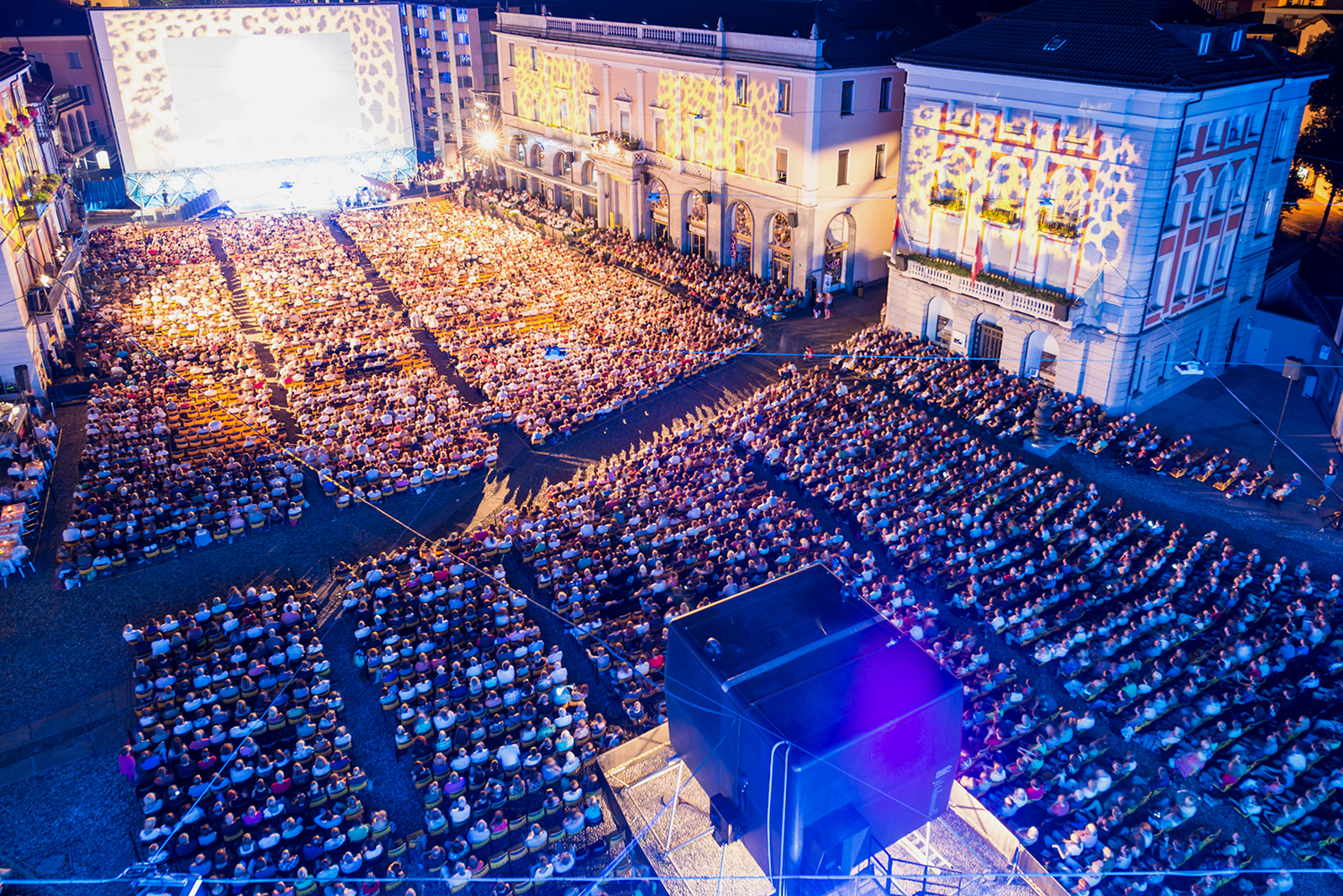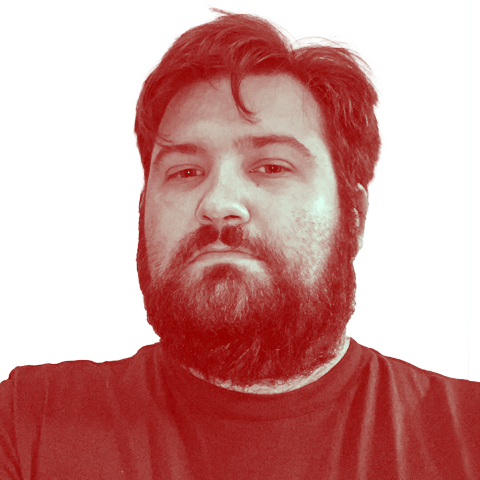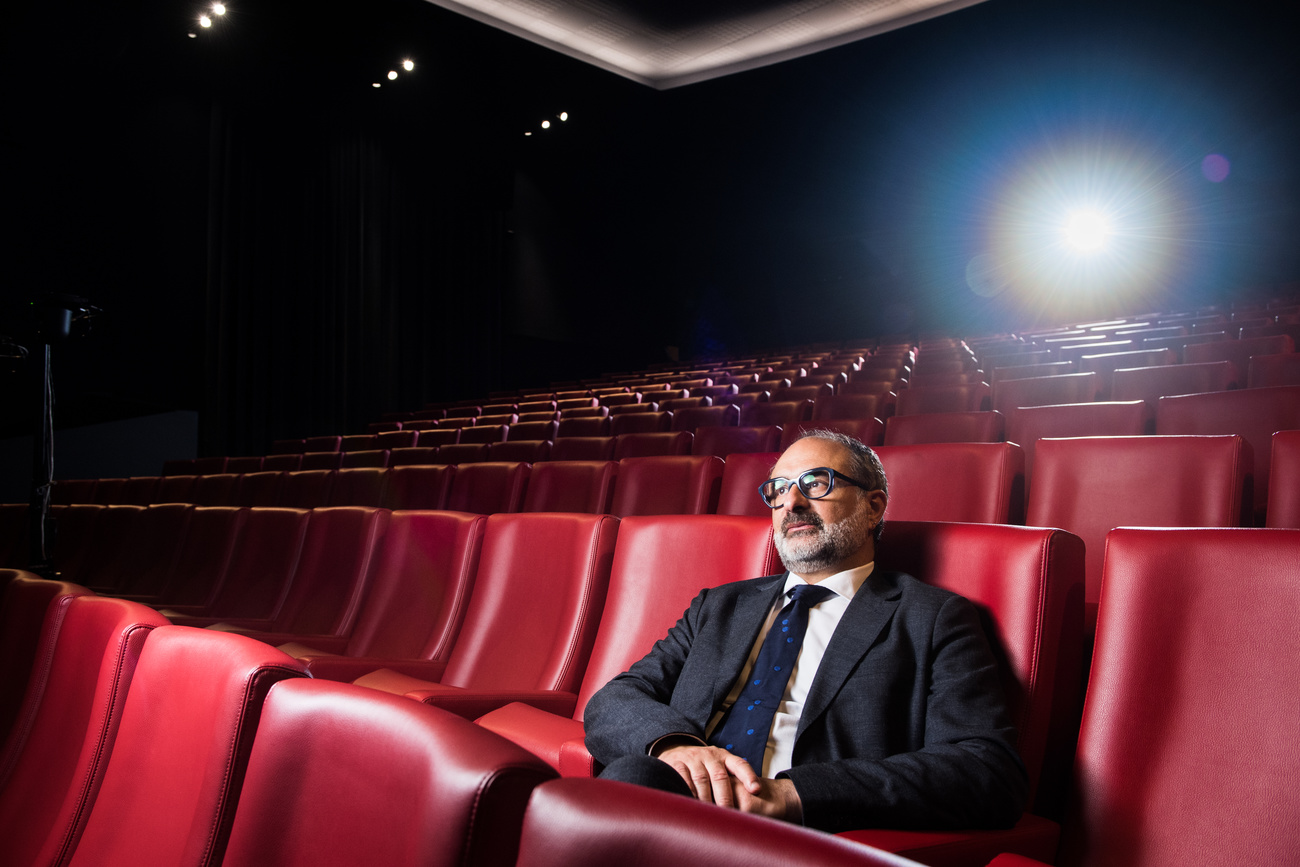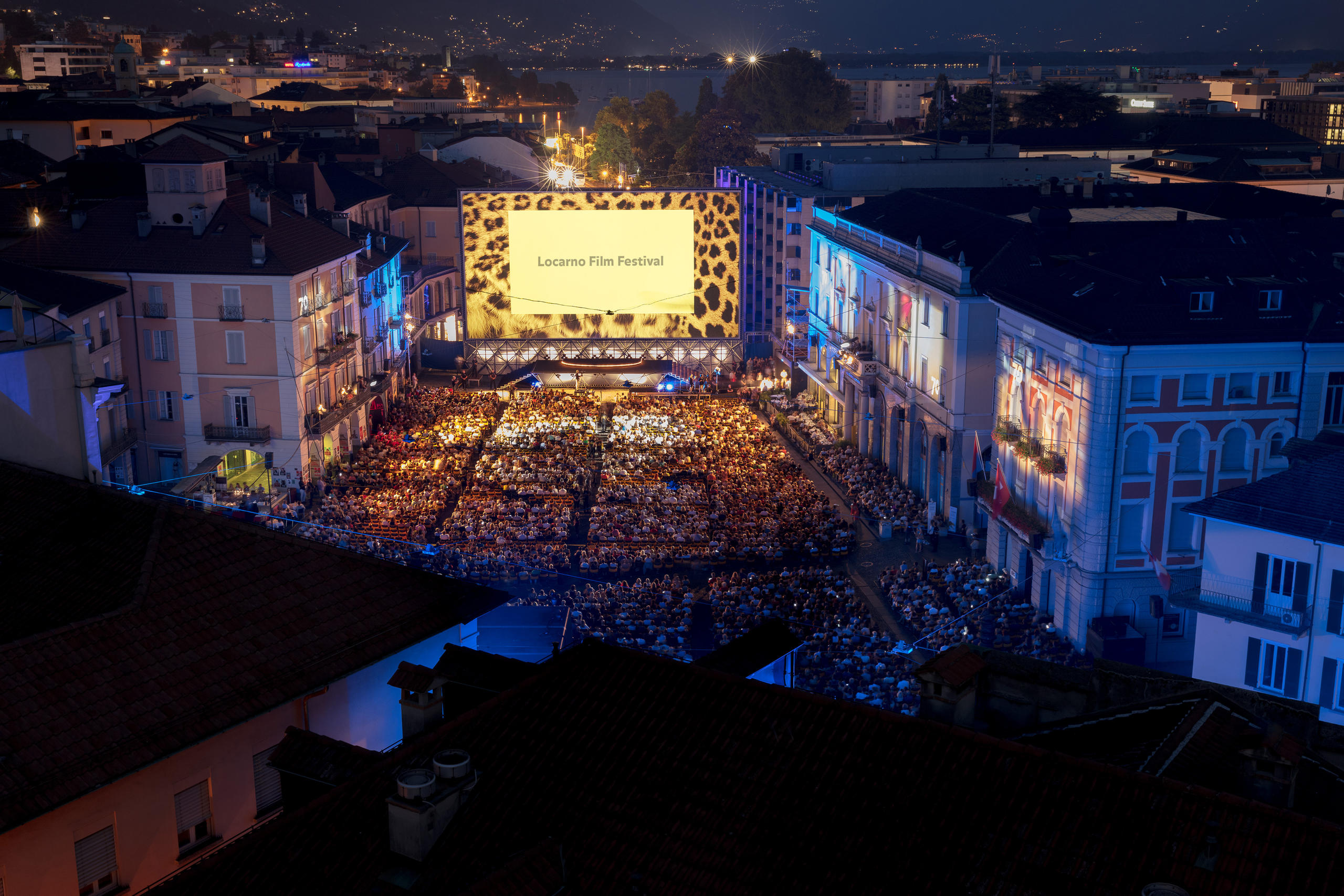Locarno Festival at 75: reeling in the past with an eye on the future

Switzerland’s most prestigious film event celebrates its landmark 75th edition, travelling in time and history with a unique blend of cinematic entertainment.
Throughout the years and generations of film making, Locarno Film Festival has attentively changed with the times but hasn’t lost its raison d’être, namely a grand celebration of cinema, with its unique blend of past, present and future. This year – as the festival celebrates its 75th edition – is no exception.
There is much to celebrate in this tiny, picturesque town at the margins of Lake Maggiore, in the Italian-speaking canton of Ticino. It is its first full-blown edition since 2019 and the beginning of the Covid-19 pandemic. Movie makers and fans from overseas are back, hotels are fully booked and all the venues operating.

More
The Grand Hotel Locarno – where it all began
The programme brings a wide selection of films smartly curated by Giona A. Nazzaro, the festival’s artistic director, who displays his distinctive, omnivorous mark that made his name as a film critic and programmer before taking the reins of Locarno last year. Faithful to the Locarno spirit, la cinephile takes precedence over the hypes of the film market.
Where Hollywood meets arthouse
Nazzaro is not a newcomer at Locarno; he has religiously attended the festival since 1994. That year, Pulp Fiction was shown in the Piazza Grande open-air screen with its director Quentin Tarantino in attendance, right in the wake of his striking triumph in Cannes – nobody knew Tarantino before, and nobody could avoid knowing him after that.
But for Nazzaro the festival made a deeper impression: “The first two films I ever saw in the Piazza were Speed and Through the Olive Trees,” he says, summing up Locarno’s uniqueness. One a quintessential American action film, the other a self-reflexive Iranian drama.
Such a juxtaposition is part of the Locarno DNA. Carlo Chatrian, one of Nazzaro’s predecessors and currently the artistic director of the Berlin Film Festival (Berlinale), tells a similar story of when he first attended the festival in the late 1990s: “You could watch the retrospective of an avant-garde filmmaker like Jonas Mekas, and then see There’s Something About Mary in Piazza Grande.”
The two critics and programmers joined the festival’s team during the tenure of Frédéric Maire, currently the director of the Cinematèque Suisse (Swiss Film Archives). Zurich-born Nazzaro began his career as a moderator and translator for film delegations speaking German or Swiss German but soon began to personally engage with writers and makers from all over the world.

The list of special guests this year includes the Greek director Costa-Gavras, master of political cinema (but not just); the grande dame of multimedia art, Laurie Anderson; and the American actor Matt Dillon, who, in Nazzaro’s words, “represents the best of an idea of American cinema born in the 1970s while celebrating the courage of unconventional choices.”
A respected expert on action movies and an avowed fan of so-called “B-movies” (low-budget commercial flicks), Nazzaro also invited independent producer Jason Blum, whose credo is to not spend more than $5 million on a film ($10 million if it’s a sequel).
Blum is often described as a “modern day Roger Corman”, the pioneer of micro-budget horror movies, and is best known for his Purge movie series, which imagines a not-so-dystopian America where the wealthy elites play dirty to get rid of the poor (the third installment, titled Election Year, was released in the summer of 2016, mere months before the electoral showdown between Hillary Clinton and Donald Trump).
Time travel
The Swiss premiere of the animated film No Dogs or Italians Allowed, which debuted to great acclaim in the Annecy animation film festival in June, marks the “prefestival event”: a free session at the Piazza Grande in the night before the official opening. Based on director Alain Ughetto’s family history, it’s a fictional conversation between the filmmaker, who manipulates the stop-motion puppets, and his late grandmother about her husband, an Italian who emigrated to France for work reasons.
The dialogue between past and present can be felt in the first days of the festival. The opening program on August 3 brings a special screening of D.W. Griffith’s Broken Blossoms (1919), a classic silent film, with live musical accompaniment. Meanwhile, the Piazza Grande big screen shows the highly anticipated action movie Bullet Train, starring Brad Pitt and Aaron Taylor-Johnson.
Back to the future, one of the main innovations of Nazzaro’s tenure is a virtual reality program.
Curated in association with the Geneva International Film Festival, it is freely accessible inside a special venue – the original Piazza Grande projection booth, which has been turned into a VR space that can accommodate up to eight visitors at a time.
Another welcome addition implemented last year is the expansion of the short film section Pardi di domani, with a third competitive strand devoted to established directors who continue making shorts after their big break. One such director is a longtime friend of the Festival, the Italian auteur Marco Bellocchio, who won one of the major prizes in 1965 with his debut film Fists in the Pocket.
The award catapulted Bellocchio to the first league of Italian cinema and international recognition, and Fists in the Pocket is one of the films that have played most often at the festival (five times as of 2015).
Turning 75 years old, but still very young at heart, the festival pays tribute to cinema history (take note of this year’s retrospective of Douglas SirkExternal link) and consolidates future-oriented initiatives that go beyond just technology. The Open Doors programme, for example, provides networking opportunities for filmmakers from countries lacking the proper cinematic infrastructure, and after three years focused on Southeast Asia it starts a new cycle with Latin American film makers.
The aim is to make Locarno more inclusive than ever, a community whose presence extends beyond these two weeks in August with multimedia events throughout the year and collaborations with other prestigious sister-festivals, such as Venice and Berlin.
Edited by Eduardo Simantob

In compliance with the JTI standards
More: SWI swissinfo.ch certified by the Journalism Trust Initiative












You can find an overview of ongoing debates with our journalists here . Please join us!
If you want to start a conversation about a topic raised in this article or want to report factual errors, email us at english@swissinfo.ch.